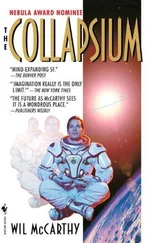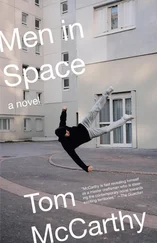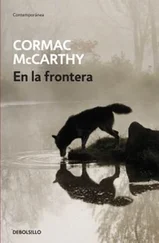“Possibly, sir,” he said. “I’ll remember you next time.”
When he’d gone I told Naz:
“Get his details when we leave. I might use him for something in the future.”
“Absolutely,” Naz said. He knew exactly what I meant.
I turned to Samuels again.
“So,” I said. “Naz has filled you in on what we want?”
“He has indeed,” said Samuels. “You want to pay me an enormous amount of money for advice on how to re-stage a bank heist.”
“Re-enact,” I said, “yes. You think you can help out?”
“I’m certain I can,” he answered. “I acted as a consultant on a crime film recently. But it’s not a film you’re making, is it?”
“No,” I said. “Most definitely not. There’ll be no cameras: just the re-enactors, doing it.”
“The principle’s the same, though, isn’t it?” said Samuels. “You want to re-stage…”
“Re-enact,” I corrected him.
“Re-enact,” he continued, “a bank heist.”
“Yes,” I said, “that’s correct. But down to the last details, ones you wouldn’t bother putting in a film. In films you just have stuff to show the cameras: just fronts, enough to make it look right on the outside. I want it to be right. Intimately right, inside.”
“For the audience?” he asked.
“No,” I told him. “For me.”
Samuels sat back in his chair and furrowed his brow. He was silent for a few seconds; then he asked:
“Where?”
“In a warehouse near Heathrow,” I said. “We’ll recreate the bank there, physically. Duplicate it.”
The waiter arrived with our drinks. I watched him set them down. I decided that I’d definitely have something re-enacted around him one day, when I got round to it. He walked away again. I sat back in my chair, drew my arms out wide and said to Samuels:
“Well!”
“Well…” he repeated, waiting for more.
“Well: tell me about bank robberies.”
“Oh!” he said. “Yes, well-where to start?” He picked another breadstick up, then laid it out in front of him and said: “I suppose that, for your purposes, I should tell you about their choreography.”
“Choreography?” I said. “Like ballet?”
“More or less, yes,” Samuels answered. “Who stands where, who does what, when, how they move: it’s all very orchestrated.”
“Choreography,” I said. “That’s good, very good.”
“Yes, it is,” said Naz. “It’s very good.”
“And,” Samuels went on, gesturing first to the breadstick’s right then to its left, “this is not just from the robbers’ side. It’s from the bank’s side too.”
“How come?” I asked. “They don’t know that the robbery’s going to happen.”
“Aha!” said Samuels. “Wrong. They don’t know when it’s going to happen. But it’s pretty much a certainty that if you have banks you’ll have robberies. All bank staff are highly drilled in preparation for these. Their actions are strictly programmed. The seven rules are even posted in every branch where all the staff can see them.”
“Seven?” I asked him.
“One: stay calm and don’t provoke the robbers. Two: activate the alarm as soon as there’s no risk in doing so. Three: only give the amount demanded, always including the bait money. Four: don’t answer…”
“What’s bait money?” I asked.
“It’s surplus money that they always keep aside to hand over to robbers,” Samuels said. “It’s usually marked, and sometimes has a canister of ink in it that’s set to explode in an hour or so. Anyway: four: don’t answer phones-unless they tell you to, of course. Five: don’t handle the demand note if they’ve used one, or touch anything they’ve touched. Six: observe the robbers-voices, height, faces if they’re not wearing masks. Seven: remember which way they ran off.”
He took a sip of his wine before continuing:
“Now, the important ones from the robbers’ point of view are the first three. The staff are programmed to behave a certain way, the robbers know this and the staff know they know, and the robbers know they know they know. So a robbery, ideally, follows a strict action-reaction pattern: A does X, B does Y in response, A then does Z and the whole interaction’s run its course.”
He’d snapped the breadstick in two and, as he explained this, made one half be A and one half B, reacting to one another by changing their positions on the tablecloth. Naz and I watched them, listening.
“I say ‘ideally’,” Samuels continued, “because this pattern is to both sides’ great advantage. The robbers get their money and the bank staff don’t get killed. What messes it all up is when a factor no one has anticipated and built into the pattern breaks in.” He placed the salt shaker between the breadstick’s two halves to illustrate this. “A have-a-go hero jumping one of the robbers, a hysterical woman who won’t obey commands, someone who tries to run out of the door…”
“Like with the carrot!” I said.
“Sorry?” Samuels asked, furrowing his brow again.
“It’s…whatever. Carry on.”
Samuels hesitated, then resumed:
“This preset pattern, when it works, which it does most of the time to both sides’ great relief, is heavily weighted in the bank’s favour-but only from the moment that they activate the alarm. Their aim isn’t to stop you robbing them: it’s to set in motion the chain that will lead to your being nabbed by the police after you’ve left. You can’t prevent this chain being set in motion-and the time from their hitting the alarm button to the police arriving is a matter of minutes: five, seven, maybe only two. Your goal is not to stop them doing this, but to carve out enough time for yourself to get in, out and away again before they do.”
“How do you do that?” I asked.
“With shock,” he answered. “Psychology again, see? You rush in, fire a frightener, point guns around-and the staff are too scared to push alarms, or to do anything!”
His tone had changed now. He’d dropped the breadstick props; his eyes were kind of sparkling, as though lit up by memories of rushing into banks and pointing guns. He sipped his wine again, wiped his lip and continued:
“They’re like bunnies in headlights: frozen. You step in and move them gently away from the counters, get them to lie down. You use their shock to create a…bridge, a…a suspension in which you can operate. A little enclave, a defile.”
I looked across at Naz and raised my eyebrow. He nodded, took his mobile out and tapped its keys. The waiter arrived with our food. He set the venison sausages Samuels had ordered in front of me by mistake. They were grey and wrinkled, like an elephant’s trunk. I imagined trying to steal an elephant and then fence it, get rid of it, just spirit it away.
“Where does it all go?” I mumbled.
“Sorry?” Samuels asked.
“I…nothing,” I said. “Whatever.”
We ate in silence for a while; then Samuels asked:
“So: this bank robbery you want to re-enact. Is it a particular one? One I did?”
I set my knife and fork down and thought about this for a moment. The other two looked at me while I thought. Eventually I told them:
“No, not a particular one. A mix of several ones, real and imaginary. Ones that could happen, ones that have, and ones that might at some time in the future.”
Naz’s phone beeped just then. He scrolled through the display and read aloud:
“In military parlance, a narrow way along which troops can march only by files or with a narrow front, especially a mountain gorge or pass. The act of defiling, a march by files. 1835. Also a verb: to bruise, corrupt. From the French défiler and the Middle English defoul.”
“Very good,” I said. “Very good indeed.”
Читать дальше












